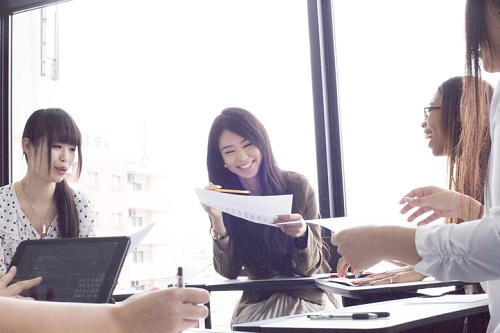
Many studies have outlined the boundless benefits of collaborative learning for students. This includes developing crucial 21st century skills such as problem-solving and critical thinking. Students also get to work on their communication skills.
Besides that, shifting education away from a traditional teacher-centred approach can quicken learning, said Pramod Tripathi, Associate Director, Academics Quality Assurance at Global Indian International School Singapore (GIIS).
“There have been discussions around how learning [takes place] not from a teacher to a student but from student to student,” Tripathi told The Educator. “Peer learning is much more faster and effective.”
This is why GIIS’ new SMART campus has set up several collaborative spaces throughout the school to encourage student-led discussions as well as flexible classrooms where chairs and tables can be easily adjusted for group-based sessions.
“We need to give students the space and time to teach their friends,” he said. “At the same time, they will get to revise the lesson.
“Students who are at the same age will think in the same manner. If I’m teaching a child, I would have preconceived notions [of what they ought to know] and teach them that way. However, when a child teaches another, they will [be able to relate better].”
For instance, a toddler might make spiral movements with his/her fingers and identify it as a cockroach – even if it seems unrecognisable to adults. He shared that if the child had showed the same thing to his/her peer, they might both agree that it is indeed a roach. Tripathi explained that it’s possible the children had seen roaches crawling in circles, which is why they described it as such.
“Children’s learning patterns are very different from adults’,” he said. “This is why GIIS is giving students a lot of space and time to teach and learn from each other.”
What if students teach the wrong things?
Allowing students the time to teach each other is all well and good, but how do you avoid them teaching the “wrong” lessons?
Tripathi said this is inevitable – which is why moving away from teacher-centred learning doesn’t mean a progression to a teacher-less classroom.
“Students will teach the wrong things but teachers need to be there to pick up the mistakes,” he said.
Tripathi believes one of a teachers’ strengths is in spotting mistakes – and this comes from experience. When he was a teacher checking his students’ work, he found himself automatically zooming in to the part of the page where there’s a mistake.
“That’s called ‘teachers’ sight’,” he said. “Teachers are necessary to help identify mistakes made which students might miss.”
Encouraging peer learning in classrooms should be a fuss-free exercise, Tripathi said. Peer learning is about students picking up and forwarding information and can be done in a simple manner, starting from a typical class exercise conducted by the teacher.
“Once the exercise is done, you can ask students to teach their partners to their right or left. After that, make a switch,” he said. “Groups and the classroom system can change [at any time]. Lessons can be done one-on-one or group-based, and students simply have to rotate their chairs.
“Peer learning is about giving students the flexibility on how much time they spend on any one exercise – you don’t even have to a set time limit [if you don’t want to].”


